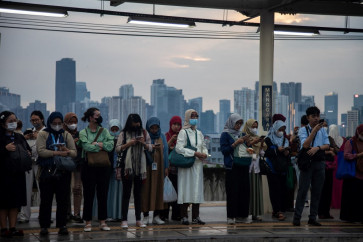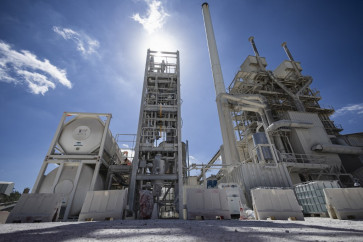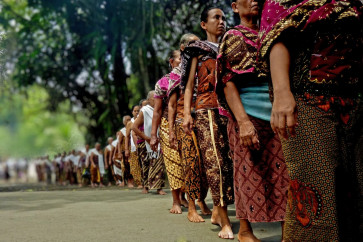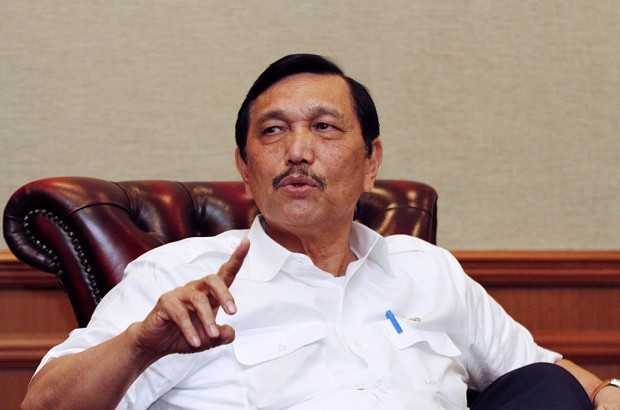Popular Reads
Top Results
Can't find what you're looking for?
View all search resultsPopular Reads
Top Results
Can't find what you're looking for?
View all search resultsGlobal aquaculture and Indonesia's role
Do you know that one out of every two fish served on your dinner table comes from fish farming, or aquaculture?Fish is a healthy and nutritious food
Change text size
Gift Premium Articles
to Anyone
D
o you know that one out of every two fish served on your dinner table comes from fish farming, or aquaculture?
Fish is a healthy and nutritious food. On a global average, fish provide 17 percent of humanity's animal protein intake. This share, however, exceeds 50 percent in some countries. In West African coastal areas the proportion of dietary protein that comes from fish is very high, e.g. 47 percent in Senegal, 62 percent in The Gambia and 63 percent in Sierra Leone and Ghana.
The same picture emerges for several Asian countries and some small island developing states, where the contribution of fish as a source of protein is also significant: 71 percent in the Maldives, 59 percent in Cambodia, 57 percent in Bangladesh, 54 percent in Indonesia and 53 percent in Sri Lanka (FAO, 2012).
Global fish consumption is approximately 18.4 kilograms per-capita per-year with total world production at 148 million tons in 2010. However, only 86 million tons came from capture fisheries, with production more or less stagnant over the last decade.
Meanwhile, global aquaculture production reached 60 million tons in 2010 with an average annual growth of 6 to 7 percent. Most of that production has been concentrated in Asia, about 89 percent. To meet the world's demand for fish, an added 50 million tons in aquaculture production must be reached by 2030.
People have never depended so much on the fisheries and aquaculture sector for their livelihoods as they do today. About 52 million people are directly engaged in this sector. In addition, approximately 195 million people are employed along the value chain.
Overall, fisheries and aquaculture support the livelihoods of some 880 million people, or 12 percent of the world's population.
In the meantime, foods from the aquatic environment have a particular role as a source of the long-chain omega-3 fatty acids (EPA or DHA), important for optimal brain and neurodevelopment in children.
A recent joint Food and Agricultural Organization (FAO) and World Health Organization (WHO) expert consultation concluded that fish in the diet lowers the risk of women giving birth to children with suboptimal brain and nervous system development compared with women who do not consume adequate amounts of fish.
In order to add 50 million tons of fish production by the year 2030, a sustainable global aquaculture development approach should be mapped out. Delegates from 51 countries gathered in Saint Petersburg, Russia, on the first week of October for the 7th Session of the FAO Committee on Fisheries (COFI) subcommittee on aquaculture.
There, aquatic genetic resources and technologies were assessed and innovative and progressive partnerships in aquaculture, including South-South cooperation and public-private sector partnerships, were encouraged.
Delegates also reiterated the importance of spatial planning, aquatic animal health and risk assessment on the development of global sustainable aquaculture development. Attention should also be paid to small-scale aquaculture, ecosystem-based approaches to aquaculture and extractive aquaculture. Also, concentration should be given to the availability and quality of feed, environmental issues and limiting factors to aquaculture production by region and corresponding mitigating strategies.
A new global initiative called the Global Aquaculture Advancement Partnership (GAAP) program was introduced in this COFI subcommittee meeting and received a positive response, indicating it's ready to be implemented.
Asia is the major player in global aquaculture, and Indonesia is fourth in world aquaculture production after China, India and Vietnam, with 2.4 million tons in 2010. In the production of seaweed cultures, however, Indonesia is positioned number two after China with 5.2 million tons per year, accounting for approximately 25 percent of the global seaweed production.
With its 81,000 kilometers of coastline, Indonesia has a great potential to develop its aquaculture sector and will easily enhance its position and become one of the big three world aquaculture powers. It is high time also for Indonesia to share its knowledge on aquaculture development with other developing countries through a South-South cooperation scheme.
A global aquaculture initiative with implementation in targeted countries will be the answer to increasing demand for aquaculture products to provide nutrients for the world population.
______________
The writer is the director of fisheries and aquaculture resources use and conservation division at the United Nations Food and Agriculture Organization. The views expressed are his own.










